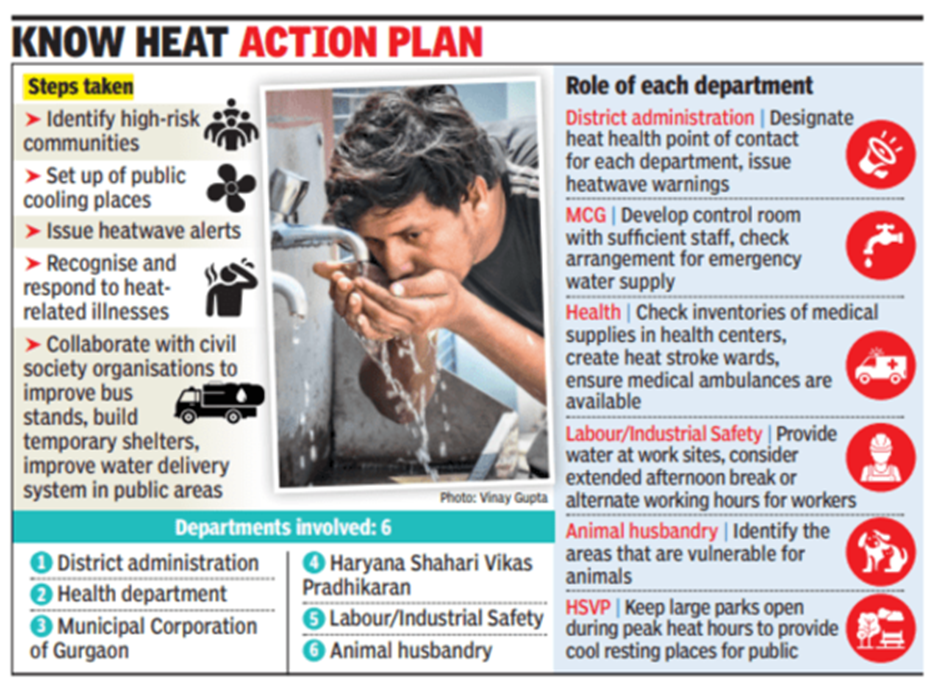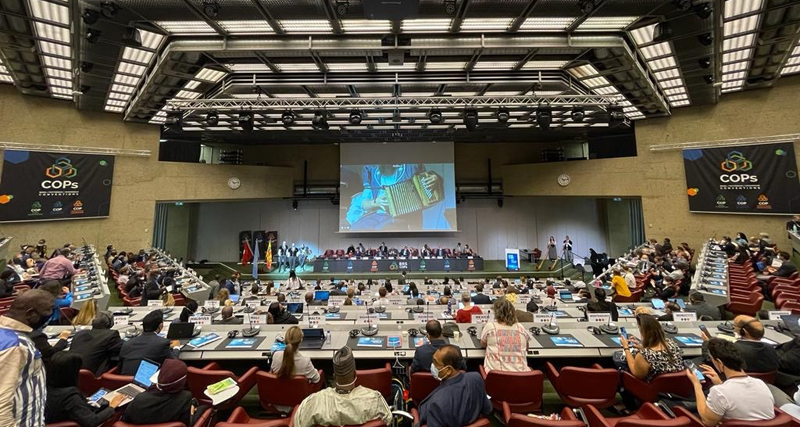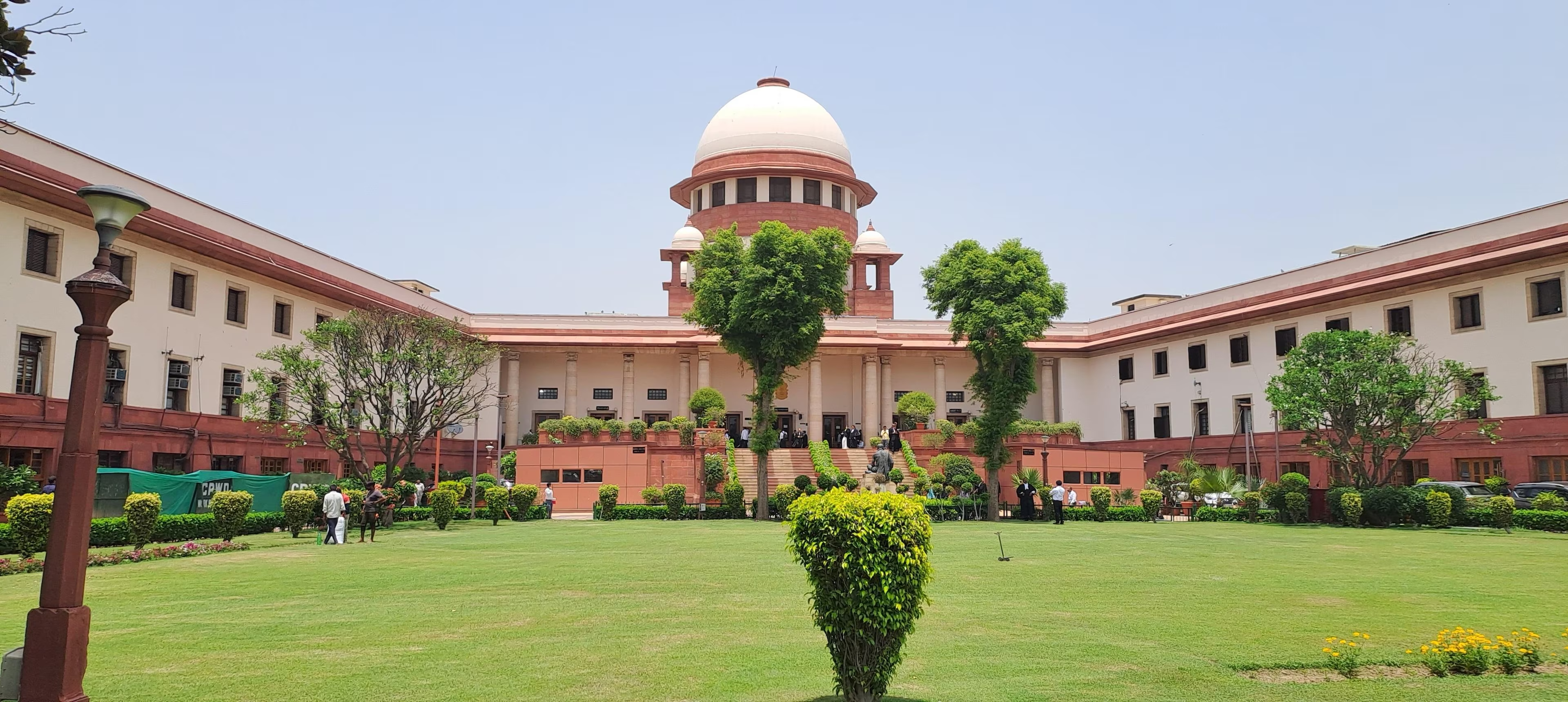- Courses
- GS Full Course 1 Year
- GS Full Course 2 Year
- GS Full Course 3 Year
- GS Full Course Till Selection
- CSAT
- 5 LAYERED ARJUNA Mentorship
- Public Administration Optional
- Online Program
- GS Recorded Course
- NCERT (Recorded 500+ Hours)
- Polity Recorded Course
- Geography Recorded Course
- Economy Recorded Course
- AMAC Recorded Course
- Modern India, Post Independence & World History
- Environment Recoded Course
- Governance Recoded Course
- Science & Tech. Recoded Course
- International Relations and Internal Security Recorded Course
- Disaster Management Module Course
- Ethics Recoded Course
- Essay Recoded Course
- Current Affairs Recoded Course
- ABOUT US
- OUR TOPPERS
- TEST SERIES
- FREE STUDY MATERIAL
- VIDEOS
- CONTACT US
Centre Has No Plans to Include Heatwave as ‘Notified Disaster’
Centre Has No Plans to Include Heatwave as ‘Notified Disaster’
30-07-2024

Background:
India experienced unprecedented heatwaves this year, resulting in hundreds of deaths. However, the government has stated that there are currently no plans to classify heatwaves as a notified disaster, which would make them eligible for financial assistance under the Disaster Management Act, 2005.
Government's Stance:
- Parliamentary Announcement: On July 25, 2024, Jitendra Singh, Minister of State for the Union Ministry of Science and Technology and Earth Sciences, informed the Lok Sabha that the 15th Finance Commission had considered including more calamities in the existing notified list but declined to include heatwaves.
- Finance Commission's Observation: The Commission noted that the current list of notified disasters eligible for funding from the State Disaster Mitigation Fund and National Disaster Mitigation Fund covers the needs of the states to a large extent, thus finding little merit in expanding its scope.
Current Notified Disasters:
The notified list of disasters eligible for National Disaster Response Fund/State Disaster Response Fund (SDRF) assistance includes:
- Cyclone
- Drought
- Earthquake
- Fire
- Flood
- Tsunami
- Hailstorm
- Landslide
- Avalanche
- Cloud burst
- Pest attack
- Frost and cold wave
- Heatwave
Impact and Statistics:
- Heatwave Days: According to the India Meteorological Department (IMD), the country saw 536 heatwave days this summer, the most in 14 years.
- Criteria for Heatwave: IMD declares a heatwave when a place's temperature exceeds 40°C in the plains, 37°C in coastal areas, and 30°C in the hills.
- Regional Impact: The northwest region of the country witnessed the warmest June since 1901.
Death Toll: India has seen 10,635 deaths due to heat or sunstroke in the 10-year period from 2013 to 2022.
Government Measures:
- Steps Taken: The government has taken several steps to minimize loss of life and property during heatwaves, including issuing heat index forecasts, early warnings, and implementing heat action plans (HAPs) and advisories.
- Limitations: Down To Earth reported that advisories and HAPs have been ineffective for protecting vulnerable groups, especially informal workers, as these are not binding and lack regulatory backup.
- International Concerns: The International Labour Organization flagged the risk of excessive heat to workers worldwide, highlighting the significant risks faced by informal sector workers in India.
State Relief Provisions:
Local Disaster Relief: If a state government wants to provide relief to victims of natural disasters not included in the notified list, it can use up to 10% of the annual fund allocation of the SDRF, subject to fulfillment of certain prescribed conditions and norms.
About Notified Disasters:
- Definition: The Disaster Management Act, 2005, defines a disaster as a "catastrophe, mishap, calamity or grave occurrence" arising from natural or man-made causes that results in substantial loss of life, destruction of property, or damage to the environment.
- Current Classification: Currently, 12 disasters are classified as notified disasters, eligible for National Disaster Response Fund/State Disaster Response Fund (SDRF) assistance.
Key Facts About National Disaster Management Authority (NDMA)
- Role: NDMA plays a crucial role in laying down policies, plans, and guidelines for disaster management in India.
- Aim: To promote a national resolve to mitigate the damage and destruction caused by natural and man-made disasters through sustained and collective efforts.
National Disaster Response Fund (NDRF):
Constitution: Constituted under Section 46 of the Disaster Management Act, 2005, NDRF supplements the State Disaster Response Fund (SDRF) in case of a disaster of severe nature, provided adequate funds are not available in SDRF.
Strategic Implications:
- Policy Review: The decision not to include heat waves as notified disasters highlights the need for a review of disaster management policies to address emerging climate-related risks.
- Vulnerable Groups: The impact on informal workers underscores the necessity for more robust and binding measures to protect vulnerable populations.
- Global Context: India's experience with heat waves aligns with global concerns about the impact of climate change on worker safety and public health.
Must Check: Best IAS Coaching In Delhi
UPSC Prelims Result 2024 Out: Expected Cut Off & Other Details, UPSC Prelims 2024 Answer with Explanation, Daily Prelims Quiz, Daily Current Affairs, MONTHLY CURRENT AFFAIRS TOTAL (CAT) MAGAZINE, Best IAS Coaching Institute in Karol Bagh, Best IAS Coaching Institute in Delhi, Daily Mains Question Answer Practice, ENSURE IAS UPSC Toppers, UPSC Toppers Marksheet, Previous Year Interview Questions, UPSC Syllabus




